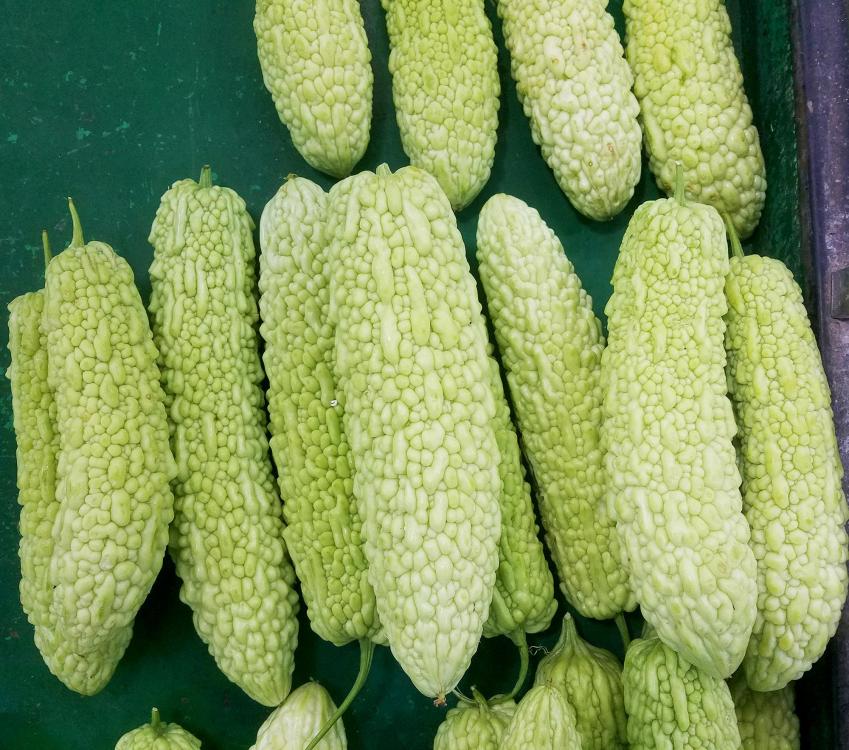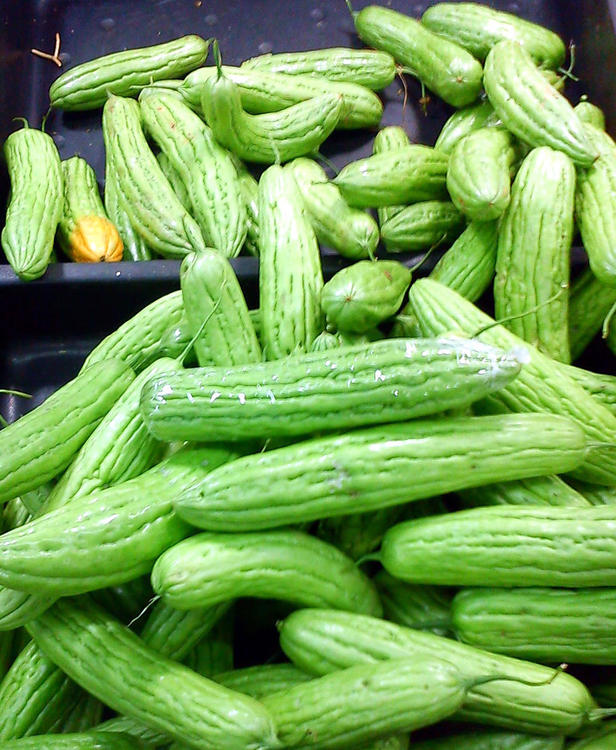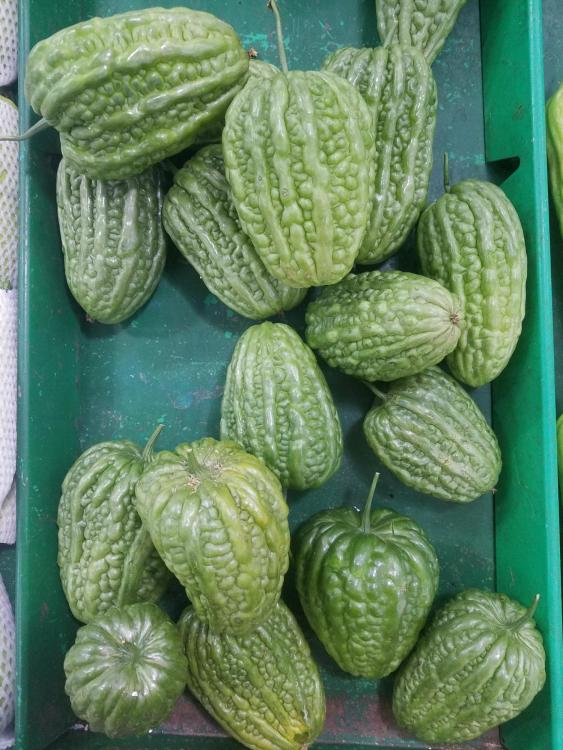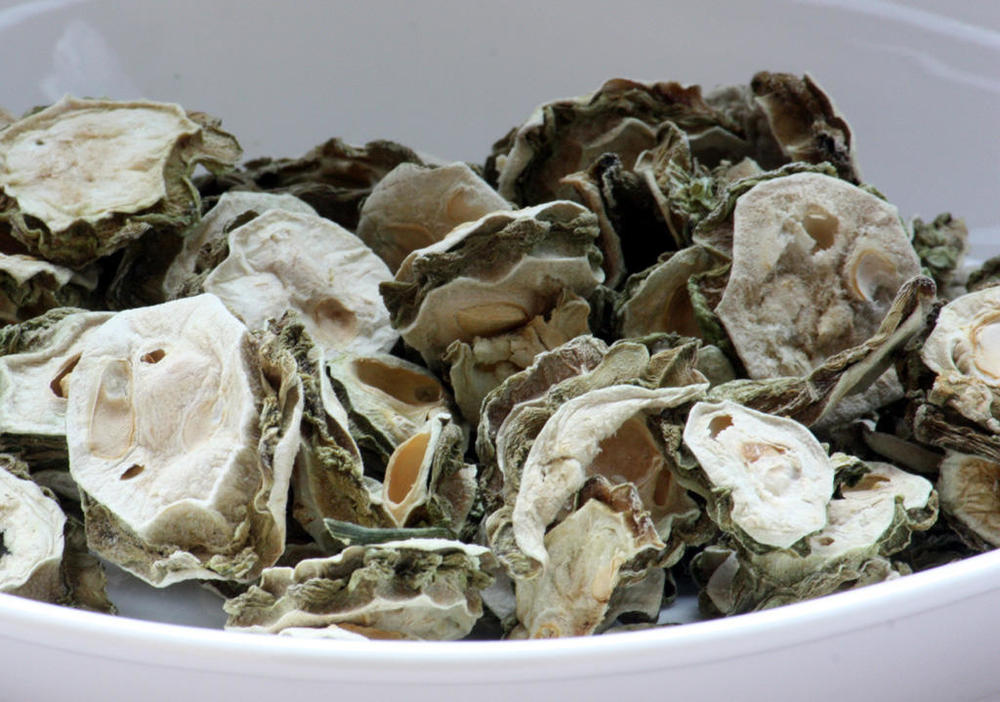Here is one many people may consider more like a bathroom product than food!
Momordica charantia is known as bitter melon; bitter apple; bitter gourd; bitter squash; balsam-pear among others. 苦瓜 (Mand: kǔ guā; Cant: fu2 gwaa1), in Chinese.
In the 14th century, this was introduced to China from India, where it remains very popular. It lives up to its English name, bitter melon, etc. It can be very bitter, but you can never be sure until you taste it. Just as some relatively mild chilli peppers can throw in a volcanic example just to keep you on your toes, bitter melon can vary from mildly bitter to totally astringent.
Some online recipes advise that you soak or salt them to remove the bitterness. I don't get this at all. If you don't like bitter, why on earth did you buy something specifically identified as 'bitter'?
Yes, bitterness is something appreciated as a taste by many Chinese, but can be difficult for some people.
Quote... Chinese chefs rarely list it on their English-language menus because they are convinced Europeans won't like it.
- Fuchsia Dunlop, Sichuan Cookery 2001 (Published as Land of Plenty in the USA.
I like it a lot, but it was an acquired taste. Round here it is usually stir-fried with beef, but also goes well with pork. It has an affinity with black fermented beans. The melons are split lengthwise and the seeds removed. Then it is cut into crescent shapes. I do it that way often, but have also used it in soups.
It also comes in another variety known as 珍珠苦瓜 (Mand: zhēn zhū kǔ guā - pearl bitter melon) with knobbly skin. Tastes the same. These come in two shapes.

Slices of the melon are also dried and used to make bitter melon 'tea'.
Dried Bitter Melon
In Cantonese, various renditions of 'bitter melon face' is used to describe someone we might call a sourpuss.





